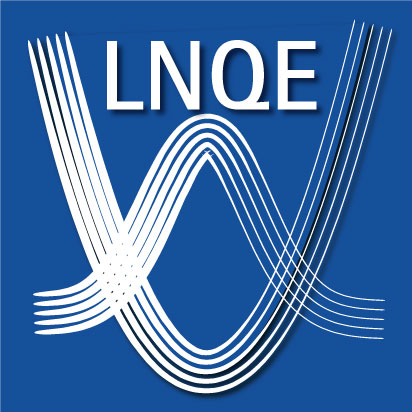Nanowires of assembled semiconductor nanoplatelets for applications in nanoelectronics

| Led by: | Supervisor: Prof. Dr. Nadja C. Bigall, LUH, Institute of Physical Chemistry and Electrochemistry. Co-Supervisors: Prof. Dr.-Ing. Ralf Franz Sindelar, Hochschule Hannover & Prof. Dr. Rolf Haug, LUH, Institute for Solid State Physics |
| Team: | Rebecca Graf |
| Year: | 2020 |
In this project, nanowires are synthesized in which semiconductor nanoplates are arranged in stacks. The resulting structures extend over several micrometers in length. Assembly processes will be developed to create either light-emitting or electronically conductive wires for applications in nanoelectronics. In a pre-work with building blocks of CdSe nanoplatelets of 4 to 5 atomic monolayers thickness, it was already observed that charge carrier transport is possible in such materials by using spectroelectrochemical measurement methods.
These results (see Figure) will now be validated for further semiconductor nanoplatelets made of substances of different electronic bandgaps. In order to make the transport of charge carriers in the stacks adjustable, it should Be investigated how the distance between the nanoplates in the wires can be varied. Therefore, various wet chemical surface modifications of the nanoplatelets will be tested. In cooperation with the Haug working group, electronic conductivity will be measured on individual wires with and without illumination, and a correlation of the distance between the nanoplatelets to the conductivity will be derived. Also embedding of the assembled nanowires in various different polymer shells will be investigated and improved in this project, since such polymer shells can represent an insulation layer, and also since the chemical functionalization of such wires could allow further processing. The associated experiments are, on the one hand, wet chemical, on the other hand, in close cooperation with the Sindelar working group using electrospinning as preparative method.
Figure from: J. Mater. Chem. C, 2018,6, 10916-10923 - Published by The Royal Society of Chemistry.






